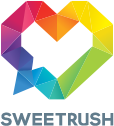Beyond The Paperwork (And The Pain!)
We've all seen it: the "revolving door" of new hires, leaving almost as fast as they arrive. This attrition is more than a drain on resources—it fractures team cohesion, dampens morale, and chips away at company culture. But one strategic lever has the power to reduce employee turnover from day one: onboarding.
A lot of effort goes into bringing in top talent, so it's especially frustrating to see that investment unravel within weeks. Though conventional wisdom puts the spotlight on recruitment, the real battle for retention is won (or lost) in the critical period after a candidate accepts your offer.
The Costly Problem Of Employee Turnover: The Hidden Drain On Your Organization
Nobody sets out to have high employee turnover. Yet, for many organizations, it's a persistent and costly issue, silently draining resources and stifling growth. The numbers speak for themselves, and they highlight a critical connection between engagement and retention. According to Gallup's State of the Global Workplace 2024 report, global employee engagement saw a decline, sinking to 21% last year. This widespread disengagement is not just a morale problem; it's a direct precursor to employees seeking opportunities elsewhere, contributing heavily to turnover. In fact, this lack of engagement is estimated to have cost the world economy a staggering $438 billion! [1]
When employees aren't engaged, their output suffers, directly impacting a business's productivity and inevitably its bottom line.
The flip side of disengagement is even more compelling for individual businesses seeking to reduce turnover. Gallup's research consistently shows that a fully engaged global workforce could add an astounding $9.6 trillion to the economy, representing a 9% increase in global GDP.
This macroeconomic marvel directly underscores the immense potential for businesses to thrive when they foster a deeply engaged workforce. Engaged employees are more productive, innovate more, and contribute to superior business outcomes. And critically, they're also significantly more likely to stay with your organization.
How does widespread disengagement and the resulting turnover manifest in an organization? The expenses tied to losing an employee go far beyond exit interviews and farewell lunches (though those eventually add up, too!).
The Tangible And Intangible Costs Of A Revolving Door
Let's break down exactly where and how these costs hit home.
Direct, Tangible Costs: These are the obvious ones that immediately impact your budget.
- Recruitment: Think advertising, sourcing, background checks, and recruiter fees…the entire process.
- Hiring: All the administrative heavy lifting to get someone officially on board, plus the time spent by hiring managers and interview panels.
- Training: Getting new folks up to speed, whether it's formal programs, materials, or good old-fashioned on-the-job learning.
Gallup estimates the cost of replacing a single employee ranges as one half to two times the employee's annual salary–and those are "conservative" estimates. [2]
Indirect, Intangible Costs: These silent costs are often far more damaging and harder to quantify.
- Lost productivity: That awkward period where a new hire is figuring things out and not quite hitting their stride. Every minute counts, and the awkward stage can drag on for months.
- Decreased team morale: Remaining team members often feel overworked, stressed, and disheartened when colleagues leave, leading to burnout.
- Knowledge drain: When experienced folks leave, a wealth of institutional knowledge and expertise often walks out with them. That's tough to replace and impacts an organization's innovation and efficiency.
- Impact on client relationships: Inconsistent service, project delays, or new points of contact can strain client trust and even jeopardize accounts.
- Brand reputation: A constant stream of departures isn't a great look for attracting future talent, reassuring customers, or maintaining investor confidence.
The kicker? These cumulative costs nearly always far outweigh the proactive investment you'd make in smart, strategic retention efforts…and onboarding is at the top of that proactive list.
Onboarding: Your Secret Weapon For Slashing Turnover
Redefining Onboarding: From Transactional To Strategic
Onboarding isn't just handing over a stack of forms and pointing to the coffee machine. That's a transactional approach, and frankly, a missed opportunity.
Instead, onboarding should be seen as a strategic, continuous journey, one that seamlessly integrates new hires into your culture, equips them to succeed, and helps them feel a sense of belonging from day one. When done correctly, onboarding lays a solid foundation for long-term employee engagement and loyalty.
Results Speak Louder Than Buzzwords: The Business Case For Doing Onboarding Right
A well-designed onboarding program delivers significant returns by directly tackling the causes of early turnover and fostering long-term commitment. Benefits include:
-
Improved Employee Engagement
Early engagement sparks long-term motivation. According to Quantum Workplace, while 82% of employees are engaged in their first year, that number often drops to 75% by year two. [3] Strategic onboarding helps keep that initial spark alive, preventing a decline in motivation and commitment.
- Faster Time To Productivity
New hires staring blankly at their screens for weeks? No more! A structured onboarding process gets new hires contributing sooner, minimizing downtime and maximizing meaningful output.
-
Stronger Cultural Integration
Effective onboarding provides an intentional pathway for new hires to truly embrace your company values and mission. It cultivates a genuine sense of belonging and alignment, making them feel like an integral part of the team, rather than a temporary guest.
-
Increased Job Satisfaction
When expectations are clear, resources are plentiful, and support is consistently provided, people are happier and more committed. The proof is compelling: the Society for Human Resource Management (SHRM) found that 69% of employees are more likely to stay for three years if they receive a great onboarding experience. [4] That kind of loyalty doesn't happen by accident.
-
Direct Impact On Retention Metrics
The numbers don't lie. Organizations that invest in robust, effective onboarding consistently demonstrate significantly lower turnover rates, particularly in that vulnerable first year. Research from the Brandon Hall Group reinforces that strategic onboarding is critical to improving new hire retention and cultivating long-term employee commitment. [5]
Future-Focused Onboarding: Stop The Revolving Door
Designing and implementing a strategic, measurable, and truly engaging onboarding program is a complex undertaking. It demands deep expertise in Instructional Design, learning technology, change management, and human psychology. Creating personalized pathways, interactive experiences, and robust measurement frameworks requires expertise and dedicated resources.
However, surmounting this complexity is precisely how you build a skilled, committed, and enthusiastic workforce of people who feel connected to your organization and are genuinely excited to contribute over the long term.
At SweetRush, we understand that effective onboarding requires more than a plan; it requires a strategic partner. Reach out to stop the revolving door and build a workforce that's engaged, productive, and committed for the long haul.
References:
[1] State of the Global Workplace
[2] This Fixable Problem Costs U.S. Businesses $1 Trillion
[3] 20 Employee Engagement Statistics That Impact Your Business
[4] Don't Underestimate the Importance of Good Onboarding
[5] Unlocking the Power of Onboarding to Aid Employee Retention





![The Pillars Of Strategic Employee Onboarding [eBook Release]](https://cdn.elearningindustry.com/wp-content/uploads/2021/11/shutterstock_634991003.jpg)



